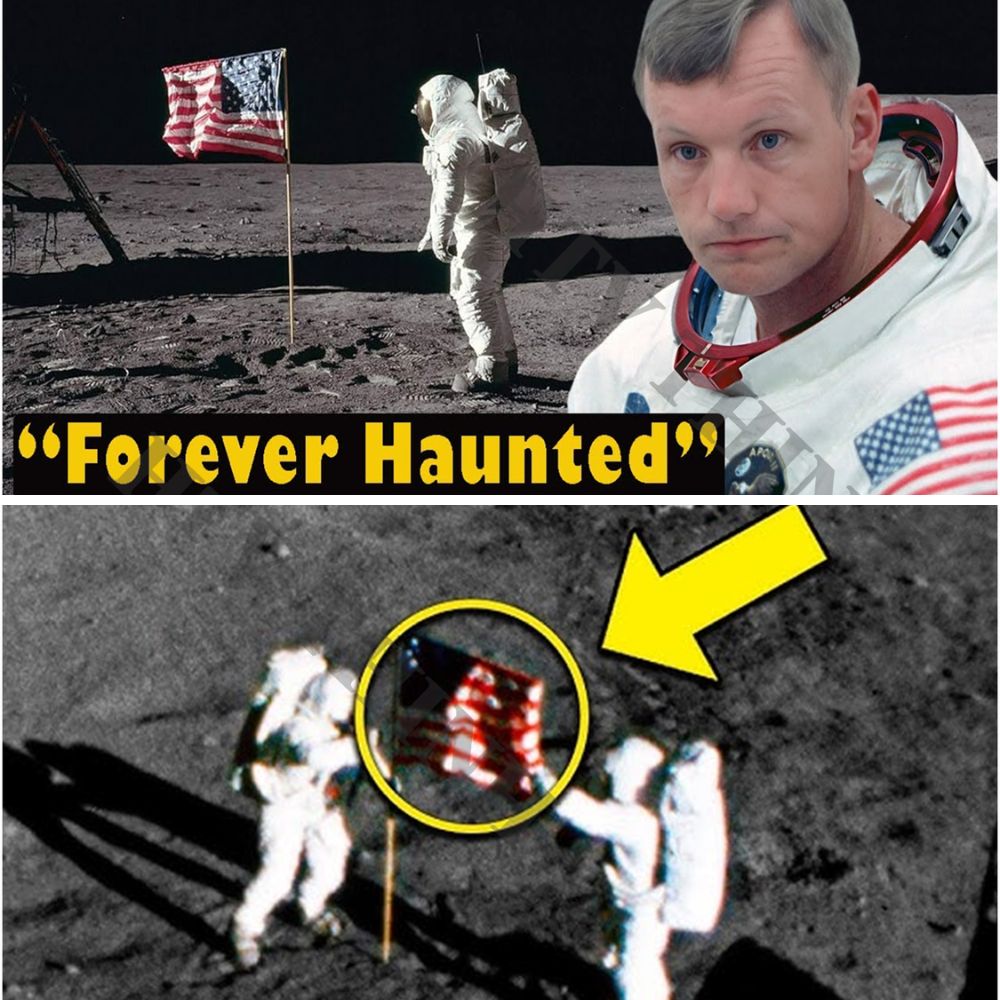The First Man on the Moon and the Secret That Haunted Him Forever

The Man Who Made History
Neil Armstrong is a name etched in the annals of history as the first human to set foot on the Moon. On July 20, 1969, his words—“That’s one small step for man, one giant leap for mankind”—resonated around the globe, symbolizing humanity’s boundless ambition and technological triumph. Armstrong was hailed as a hero, a pioneer who transcended earthly limits to touch the cosmos.
Yet, behind the fame and the monumental achievement lay a secret—a burden that haunted Armstrong throughout his life. This article delves into the untold story of Neil Armstrong, exploring not only his historic triumphs but also the personal struggles and hidden truths that history often overlooks.
Neil Armstrong: A Brief Biography
Born in 1930 in Wapakoneta, Ohio, Neil Armstrong’s fascination with flight began early. He earned his pilot’s license at just 16 and went on to serve as a naval aviator during the Korean War. Later, he joined NASA’s astronaut program, where his calm demeanor and exceptional skills made him a natural leader.
Armstrong’s journey to the Moon was the culmination of years of dedication, training, and perseverance. As commander of Apollo 11, he led the mission that fulfilled President John F. Kennedy’s vision of landing a man on the Moon before the decade’s end.
The Historic Moon Landing: Triumph and Technology
Apollo 11’s success was a marvel of engineering and teamwork. The mission’s lunar module, Eagle, touched down in the Sea of Tranquility, and Armstrong’s first steps marked a new era for humanity.
Technological Feats: The mission overcame countless challenges, from navigating the lunar surface to ensuring safe return.
Global Impact: Armstrong’s achievement united people worldwide, inspiring generations to dream big.
Scientific Discoveries: Apollo 11 brought back invaluable lunar samples and data, advancing space science.
The Middle Section: The Secret That Haunted Neil Armstrong
This section reveals the most compelling and lesser-known aspects of Armstrong’s life, designed to captivate readers and encourage them to stay engaged.
1. The Silent Struggle: Coping with Fame and Isolation
Despite his global fame, Armstrong was a deeply private man. He shunned the spotlight and rarely gave interviews, preferring a quiet life away from public adulation. The weight of being a symbol for an entire generation took a psychological toll.
Armstrong reportedly struggled with feelings of isolation, grappling with the immense expectations placed upon him. The pressure to embody the ideal hero conflicted with his humble nature, leading to a lifelong internal battle.
2. The Tragic Loss of His Daughter: A Hidden Heartache
In 1962, Armstrong’s two-year-old daughter, Karen, died of a brain tumor. This devastating loss profoundly affected him and his family. Many biographers suggest that this personal tragedy influenced Armstrong’s reserved demeanor and his reluctance to engage publicly.
The pain of losing Karen remained a private sorrow that Armstrong carried silently, even as he made history.
3. The Controversy Over the “One Small Step” Phrase
Armstrong always maintained that he said, “That’s one small step for a man,” but many heard it without the “a.” This linguistic ambiguity sparked debates and conspiracy theories questioning the authenticity of the moon landing.
Armstrong’s insistence on the missing word became a metaphor for the complexities and imperfections behind the flawless image of the Moon landing.
4. The UFO Sightings and Secret Government Files
Perhaps the most intriguing secret involves Armstrong’s alleged encounters with unidentified flying objects (UFOs) during his space missions. Declassified documents and eyewitness accounts suggest that Armstrong witnessed unexplained phenomena both in space and on the Moon’s surface.
Rumors persist that Armstrong was privy to classified information about extraterrestrial life, knowledge he was sworn to keep confidential. This secret has fueled speculation and conspiracy theories for decades.
5. The Struggle with NASA and Government Politics
After Apollo 11, Armstrong faced challenges within NASA and government circles. He was frustrated by the increasing bureaucracy and politicization of space exploration. His advocacy for responsible and ethical space policies often put him at odds with powerful interests.
This internal conflict contributed to his decision to leave NASA in 1971 and pursue a quieter academic career.
The Legacy of Neil Armstrong: Beyond the Moon
Armstrong’s life after Apollo 11 was marked by humility and dedication to education. He became a professor of aerospace engineering, inspiring students and advancing research.
His legacy is not just the Moon landing but the example of perseverance, integrity, and curiosity he set for humanity.
The Psychological and Emotional Toll of Space Exploration
Space exploration is a monumental human achievement, but it comes with profound psychological challenges. Armstrong’s experiences highlight the emotional complexities astronauts face:
Isolation and Stress: The vastness of space and the dangers involved can lead to lasting psychological effects.
Public Expectations: Being a symbol of national pride adds immense pressure.
Coping Mechanisms: Armstrong’s private nature and retreat from public life reflect common coping strategies among astronauts.
Conclusion: Remembering the Man Behind the Legend
Neil Armstrong’s story is more than a tale of technological triumph; it is a human story of courage, loss, secrecy, and resilience. The secret that haunted him reminds us that even heroes carry burdens unseen by the world.
As we continue to explore space and push the boundaries of human achievement, Armstrong’s legacy challenges us to embrace both the glory and the humanity behind every giant leap.